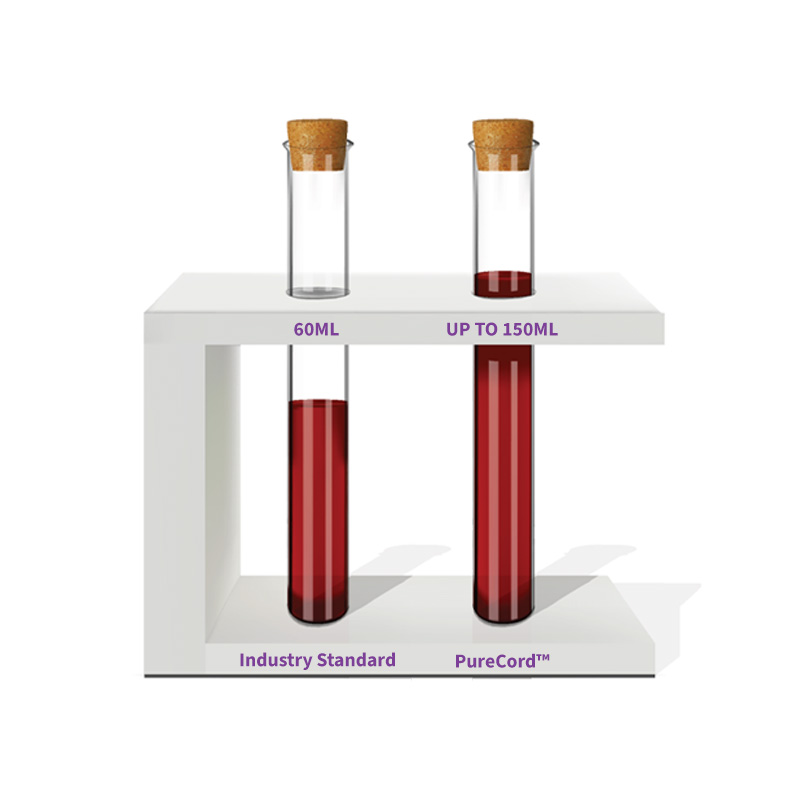PureCord™
Cord Blood Banking
#1 choice of OB/GYNs,
Midwives and
expectant parents
for newborn stem cell preservation
Cord Blood Banking
PureCord™
#1 choice of OB/GYNs,
Midwives and
expectant parents
for newborn stem cell preservation
Cord Blood
Banking & Storage

PureCord™ collects up to twice as much Cord Blood as the industry standard.
PureCord™ collects up to twice as many stem cells as the industry standard.
Before this development, it was common for a cord blood collection to only have enough stem cells to treat a patient weighing up to 65 lbs. Depending on the medical collection and treatment needs, PureCord™ allows us to collect enough stem cells to treat patients weighing up to 165 lbs.
This means that PureCord™ increases therapy options for smaller patients, who may still benefit from the higher amount of stem cells available to carry out treatment, and assists parents in protecting their children through adolescence and possibly into adulthood.
We’re dedicated to providing more patients with this worthwhile stem cell resource as a therapy option.
View our Cord
Banking Packages
Everything you need to know
about Cord Blood Banking
The act of keeping a baby’s stem cells for later use by the family who banked them is known as private cord blood banking. The stem cells belong to the family.
Stem cells from donated cord blood are placed in a bank from which anyone who matches the donor can obtain stem cells. However, around 70% of donated cord blood is wasted, and the cost to extract these stem cells can reach £50,000, making it much more expensive than private banking.


